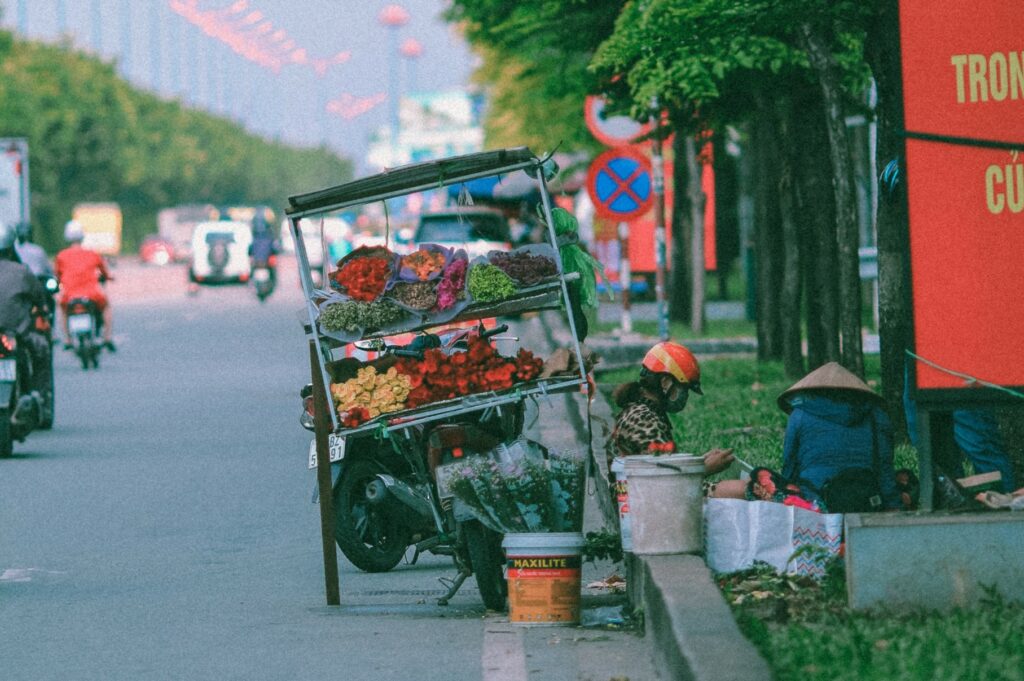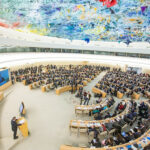In this article, Ksapa considers the importance of embedding a robust gender perspective in industrial project developments. With that in mind, we build on the World Bank Group’s 2016–2023 Gender Strategy as we consider the means to mainstream gender equality and overcome pervading gaps. This from the design phase of new industrial developments onwards.
This article is content coming from our briefing paper. If you wish to discover all of our briefing papers, please click here.
Embedding a Robust Gender Perspective in Infrastructure Development
Understanding Gender Dynamics
The first step to embedding a robust gender perspective in infrastructure development is of course understanding the underpinning dynamics. Here, Ksapa delves into gender dynamics in the economic landscape. How they impact global wealth and development from on region to another. How they may themselves be impacted by new infrastructure developments.
Despite the bias they face, women now control 32% of the world’s wealth, effectively adding $5 trillion to global wealth every year – and at a much faster pace than in the past. Moreover, For every USD 1 of investment raised, women-owned start-ups generate USD 0.78 in revenue, compared to USD 0.31 for male-run businesses.
Beyond this essentially white-collar considerations, there is a broader correlation between a country’s GDP and female labor force participation. It is in fact estimated a 25% reduction in the gender gap could increase global GDP by $5.8 trillion by 2025. It remains gender inequality is a defining characteristic of our economic infrastructure and the services it affords citizens globally. This is especially true in emerging economies, where women trail men in health and educational outcomes, access to jobs and assets and their ability to voice their opinions and exercise agency over their lives. Important fact, women account for just a third or less of human capital wealth in low-income and lower-middle income countries. In South Asia, losses from gender inequality are estimated at $9.1 trillion, against $6.7 trillion in Latin America and the Caribbean and $3.1 trillion in the Middle East and North Africa. In Sub-Saharan Africa, losses hit $2.5 trillion.
Infrastructure Inherently Impacts Gender Dynamics
In light of such trends, industrial developments are anything but gender-neutral. Indeed they impact gender outcomes from the way these investments are planned, designed, constructed and operated. This is particularly true of women’s access to the opportunities they convey, both in terms of the quality, inclusiveness and price of the services they provide. Investing in the expansion of global networks – from industrial plants to highways and energy infrastructures – can disrupt communities.
Women, as the conventional heart of households, are first in line given they are expected to put bread on the table and educate their children. At best, new developments empower them to do so. Think of how transportation infrastructure help women travel more freely provided they include safety measures such as street lighting. Women would be in a better position to access the labor market or education opportunities. In any case, it is expected they would save commuting time, improving their productivity or, in any case, freeing time for other activities.
Conversely and perhaps with greater frequency, these infrastructures investments further enshrine or worsen existing power imbalances between women and men. Think how new works generate an influx of construction personnel (mostly male) and eases the flows of both people and goods. This undoubtedly exposed local communities and women chiefly among them, to the rise of sexually-transmitted diseases such as HIV/AIDS.
Both examples illustrate the importance of a proper consultation of impacted communities and that these processes be embedded in contracting mechanisms. It is essential these systems be structured from the earliest stages of design onwards – that is, throughout the supervision and oversight of program implementation.
Building on the World Bank’s Gender Strategy
With that in mind, developers are increasingly encouraged to adapt to gender dynamics through the project lifecycle. These assessments should be carried out by a qualified third-party and include a review of project documentation and the consultation of relevant internal and external stakeholders (as appropriate).
That way, they may determine the extent to which gender has been considered and incorporated in the design of the project’s environmental and social policies, plans and procedures. Finally, these assessments should determine an ambitious action plan, with detailed recommendations to improve gender dynamics within the project’s environment and social management systems. With a view to streamline this approach for project developers, the World Bank developed a 2023 Gender Strategy. The document is indeed structured around 4 core goals targeting existing gaps in opportunity between men and women:
- Endowment = Improving human endowment gaps by reducing health, education and social-protection gaps between men and women (e.g. school-to-job transitions, gender stereotypes in the workplace, sexual and reproductive health rights…)
- Opportunity = Removing constraints for more and better jobs by boosting women’s participation in the workforce, income-earning opportunities and access to key productive assets (bearing mind key considerations of burden of care, access to mobility, access to formal employment…)
- Agency = Enhancing women’s voice and agency and engaging men and boys by including women in decision-making decisions pertaining to service delivery, reducing gender-based violence and addressing conflictual situations.
- Ownership = Removing barriers to women’s ownership and control of assets by improving women’s access to land, housing and technology.
Building on this strategy, project development teams will be brought to review existing documentation, starting with stakeholder dialog plans. They will then be in a position to appropriately engage stakeholders and identify and assess concrete gender gaps. That is precisely where a gender action plan comes in.
Ksapa’s 6-Step Guide to Designing Robust Gender Action Plans
A robust Gender Action Plan will move project development from analysis to action. The following 6 steps ensure gender concerns are addressed and gaps are ultimately reduced:
| Steps | Actions Points | Key considerations |
| Prioritize Core Gender Issues | – Identify key female stakeholders and their representatives for topical engagement, notably via household surveys/interviews – Expand analysis to the full spectrum of gender dynamics (i.e. beyond women alone) to shed light on gender relations – Consider baseline socio-economic and cultural dynamics, stereotypes and mental/physical barriers – Analyze project impacts on both women and men (gender-specific risks and opportunities to narrow gender gaps) – Develop/activate gender-based prioritization criteria | – Pinpoint gender-specific priorities, needs and usage of infrastructure – Identify vulnerable sub-segments and their specific needs and usage of infrastructure – Consider differential impacts on women, men, girls and boys – Adapt to the socio-economic and cultural contexts – Challenge locally-relevant assumptions and stereotypes – Document constraints and barriers to women and men’s participation in project activities and access to the underpinning benefits – Seek feedback on strategies to enhance positive outcomes and remedial measures to address negative impacts |
| Outline Direct and Indirect Contributions To Gender Dynamics | – Explicate what prevents both men and women from achieving similar outcomes in across areas of human development – and, conversely, what helps – Ensure the implementing staff have the resources and knowledge to dovetail their diagnoses and proposed action plans to territorial specificities, particularly as they relate to gender dynamics | – Consider how the project may provide, directly or indirectly, new access to markets (e.g., improved transportation, information or education) – Distinguish between well-known challenges (e.g. curbing contrasts between educational outcomes for girls and boys by improving community water and sanitation to free up time for girls to go to school) versus invisible dynamics (e.g. challenging unspoken societal norms and biases by employing women in non-traditional jobs such as road maintenance). – Anticipate how project design could further boost indirect benefits, in such a way as to equitably meet the needs of both women and men. |
| Specify Goals And Activities Throughout Project Lifecycle | – Outline programs and socio-environmental management systems to address priorities to bridge gaps in outcomes for both women and men – Select a limited number of priorities to avoid a tick-the-box exercise – Focus on outcomes rather than inputs, taking into account local realities and if relevant, the specificities of vulnerable groups and wherever relevant, conflict-affected areas | – Define clear monitoring and evaluation systems at all levels of engagement – Empower locally-involved players to disseminate what works and knowledge of what doesn’t throughout their teams – Include continuous improvement approach for all players involved to document lessons learned, qualitative and quantitative assessments, best practice activation and adaptation or innovation |
| Clarify Roles and Responsibilities | – Clarify approach to managing gender-specific activities (management, calendar, relevant staff) – Explicit specific roles and responsibilities (who is responsible for what) – Specify whether the management gender-centric activities is embedded in core infrastructure development, building and operations or if it should be included from of a social engagement angle of the project designed to increase benefit to the community through a gender focus | – If possible, assign specialists in charge of programs and socio-environmental management systems – However, appointing a specialist is not always an option. In which case, staff can be placed in charge of select gender issues and corresponding activities at the local office level – Wherever possible, build local staff capacity to address gender dynamics, notably through the relevant national ministries and specialized consultants or civil society organizations – Depending on the resulting role distribution, deliver appropriate tools to staff, including capacity-building and awareness-raising on gender dynamics |
| Allocate Specific Resources | Identify budget lines to secure gender-centric activities and related activities are provisioned and effectively implemented throughout project lifecycle | – Secure a separate budget line or delineation in budget to provide the necessary staff/resources – Distinguish between available resources to pull from provisioned activities (e.g. part-time allocation of local staff) versus additional input of resources for specific activities (e.g. development of specific training contents through local resources) – Incentivize local staff to take on new, gender-centric responsibilities on top of their own and plan resource allocation accordingly |
| Design Gender-Sensitive Engagement Mechanisms | – Develop targeted gender activities, gender-responsive design and technical specifications – Conduct consultations with women and men of different socio-economic status and demographic characteristics to ensure attendance and meaningful participation – Structure engagement around concrete actions and metrics – Specify the monitoring and review modalities for the implementation of the gender action plan, including stakeholder interviews throughout project lifecycle | – Consider including a gender-related project goal and follow-up on how gender analyses and Stakeholder Consultations are Reflected across Project Design, Results and Operations with stakeholders – Recommend the corresponding impact indicators (e.g. improved access to basic services, number of men and women who started new economic activities as a result of infrastructure and services…) based on sex-disaggregated data |
Conclusion
Following the World Bank’s lead, businesses and investors are increasingly gender dynamics in infrastructure development. Across all sectors (power generation, transportation…), key players indeed strive to better understand – and address – the underpinning gender dynamics.
The challenge can be boiled down to asking the right questions and prioritizing issues relevant to both men and women. The next steps then lies in embedding this structured input in the very way infrastructure projects are designed, built and operated. This implies key players build the expertise, tools and partnerships to document, implement and monitor how infrastructure evenly deliver benefits to men and women. And that is precisely what Ksapa intends to support with its 6-step guide to designing robust gender action plans.
Through this briefing paper, we hope to contribute to the triangulation and dissemination of cross-sector best practices. With a view to embed a vibrant and robust gender perspective in infrastructure project planning and development, we regularly work with investors and businesses to adapt methodologies and tools to their project specificities, bearing in mind the specificities of local contexts and vulnerable users. With that in mind, we emphasize the importance of adapting our proposed gender-sensitive engagement modalities to support attendance and men and women’s constructive participation throughout the project lifecycle.
As a sustainability and corporate responsibility consultant, Margaux joined Ksapa with international experience in public, private and non-profit organizations. She had previously worked for the Deloitte and Quantis sustainability consultancies, lobbied for environmental research on behalf of the INRA and contributed to Total’s extra-financial reporting.
A Franco-American citizen, Margaux holds sustainability certifications from the IEMA and Centrale-Supélec on top of a Masters degree in History, Communications, Business and Internal Affairs.
She is fluent in French, English and Spanish.






